Mavs Film Room: Can Brunson, Dinwiddie Lead Against Jazz Without Doncic?
On Saturday, the Dallas Mavericks will take on the Utah Jazz in Game 1 of their first-round playoff series. With Luka Doncic ruled out for the start of the series, can the Mavs overcome his absence to pull off a win?
With Doncic being the second-highest usage player (36.8 percent) in the NBA this season — trailing only Joel Embiid — a lot will naturally change about the Mavericks' approach when he's not available to play.
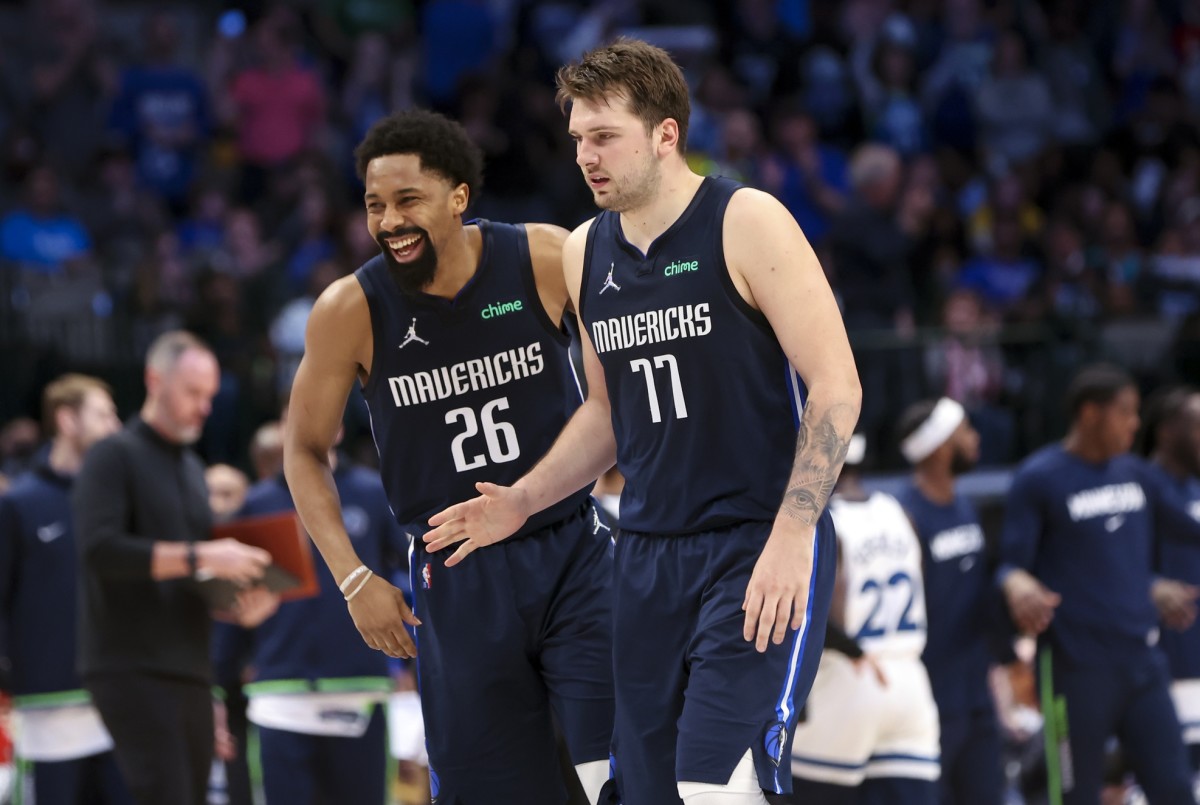
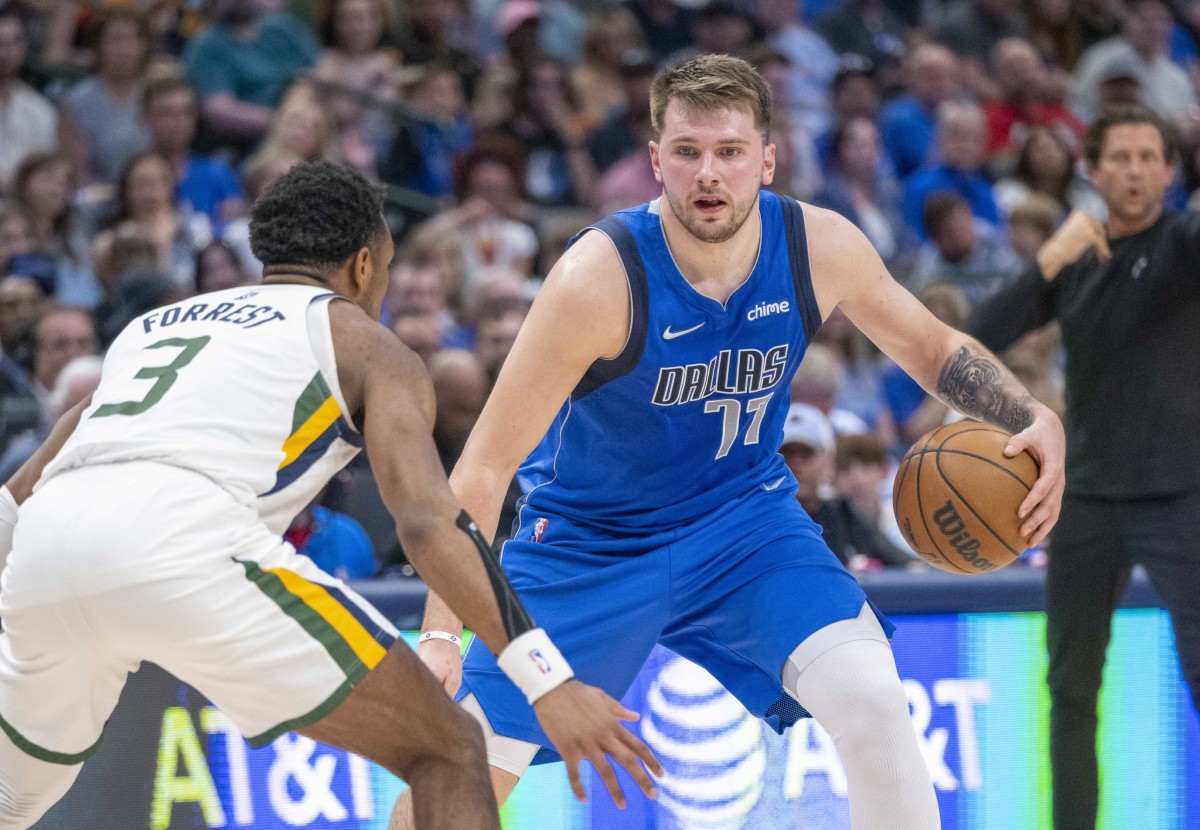
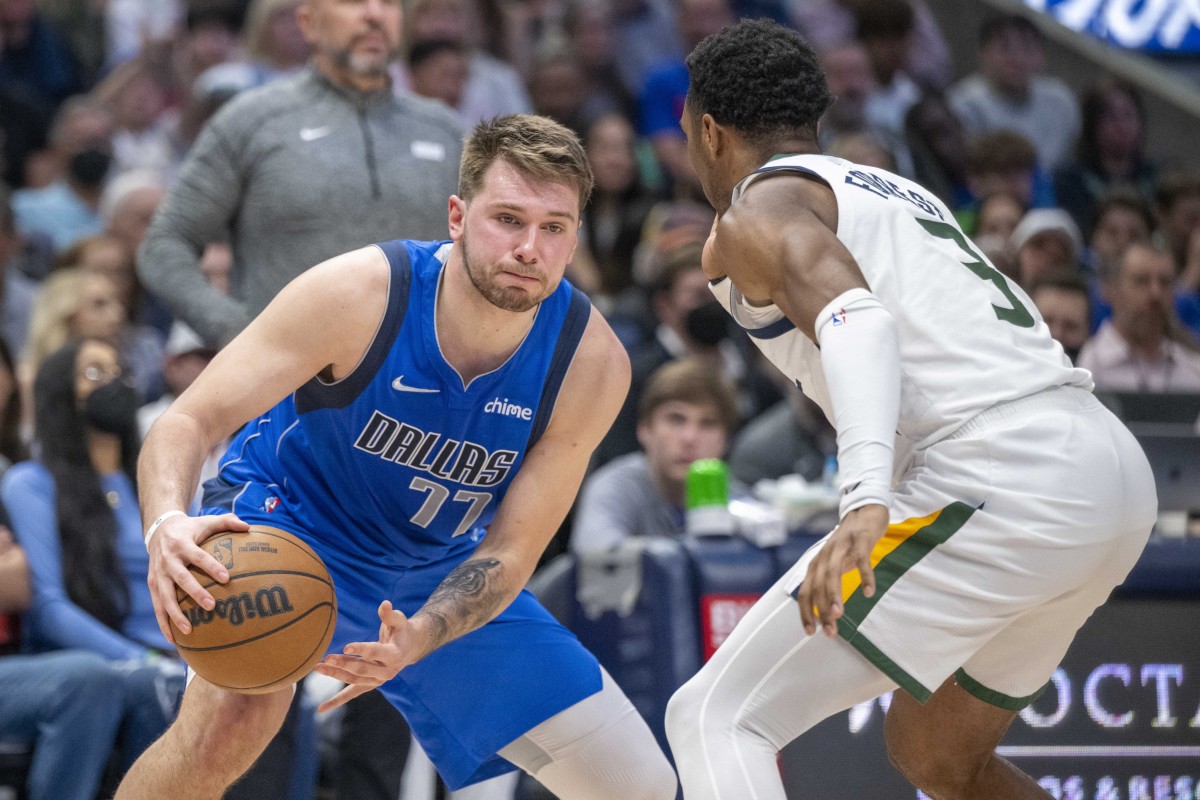
The rim protection of Rudy Gobert and Hassan Whiteside presents challenges for many teams. With Doncic, it's not a matter of if he will find a weakness and exploit it; it's a matter of when he does. If he's not in the lineup, there's a lot that’s lost in that regard, along with his ability to attack drop coverage, among many other things.
With the Jazz deploying a defense anchored by Rudy Gobert's rim protection, it'll be important for the Mavericks' shooters to convert on open looks at a high clip. However, there is still going to be much required from the top options in the offense to take and make tough shots that naturally come in the playoffs.
The sample size is small, but the blueprint is clear: Spencer Dinwiddie will slot in next to Jalen Brunson in the starting backcourt, with both players shouldering much of the initiation burden for the Mavericks' half-court offense.
Brunson and Dinwiddie appeared in three games against the Jazz with the Mavericks. Brunson averaged 19.0 points, 3.0 rebounds, and 4.7 assists. As for Dinwiddie, he averaged 18.3 points, 3.0 rebounds, and 2.0 assists. Significantly more will be needed from both without Doncic.
Can the Mavericks get by with Brunson and Dinwiddie leading the offense against the Jazz? Let's take a closer look.
Can Dinwiddie Give Best Luka Impersonation?

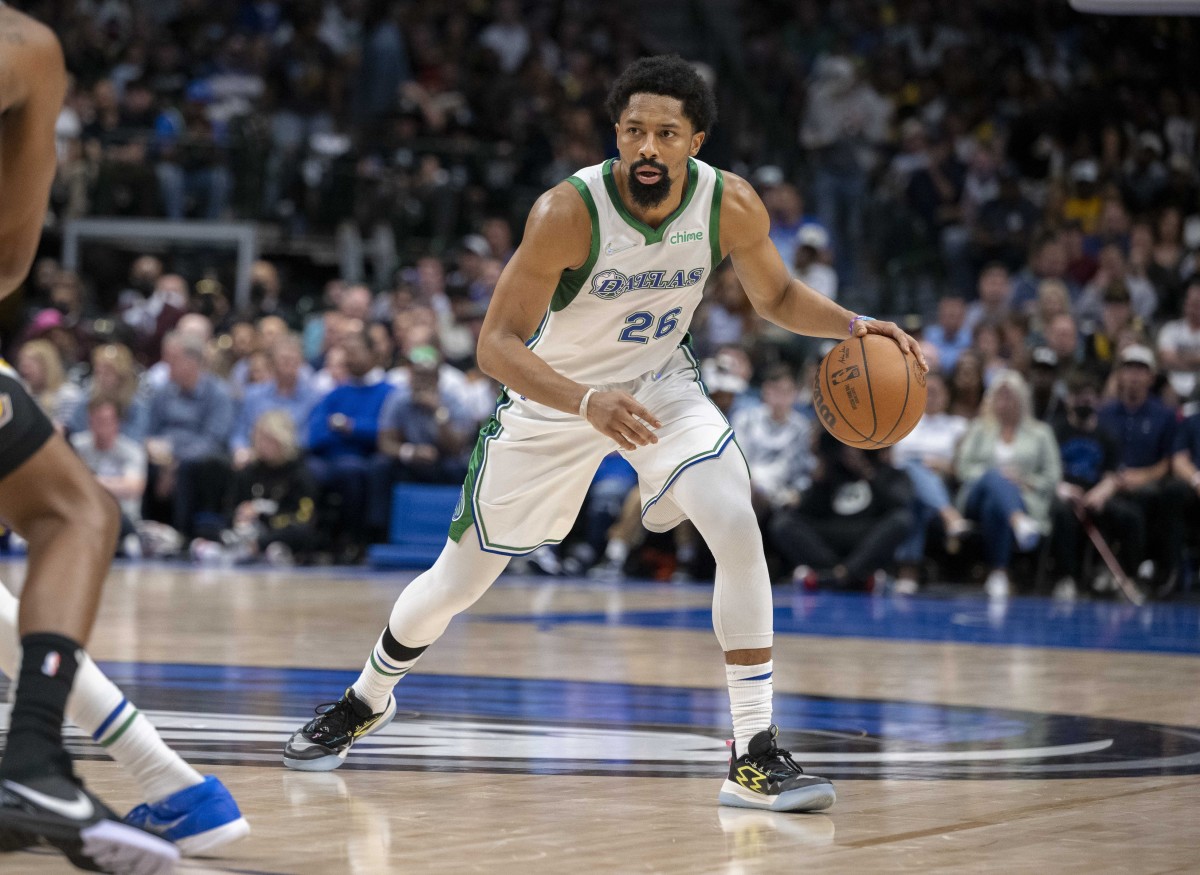
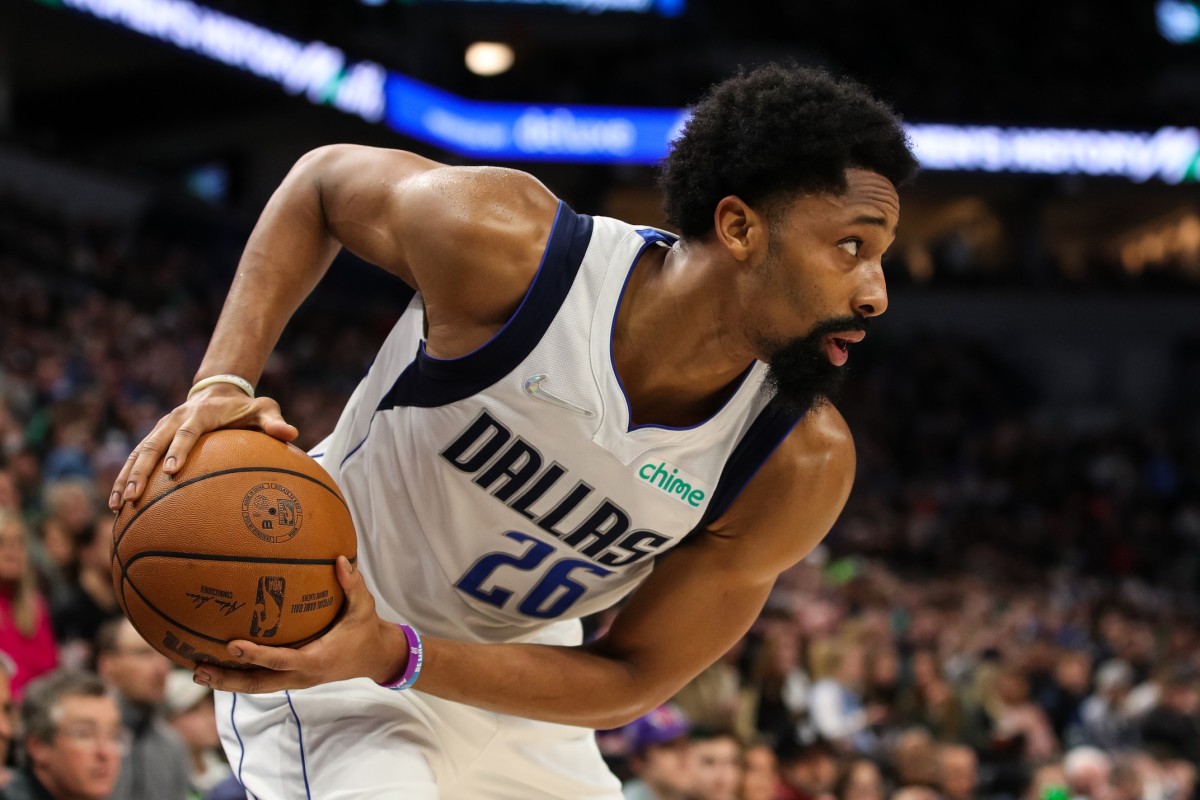
There is no replacing a top-five player in the NBA. However, the Mavericks' best bet to do so is Dinwiddie. Standing at 6-5 with a strong frame, he presents the closest physical profile to Doncic in Dallas' current two-guard tandem.
When the threat of Gobert's rim protection was present by playing off Powell, there was an impact on finishing execution. Dinwiddie has done most of his damage against the Jazz on 3s and toward the nail area in the top of the paint. He got deep into the paint at a favorable rate, but his 47.6 percent clip was 10.4 percent below league average.
One option for Dinwiddie when initiating offense is to have the big slip and force Gobert's commitment in the paint. If the on-ball defender goes over, there is a window for Dinwiddie to use a hostage dribble to get the defender on his side — presenting a path to get near the nail for a floater.
When Gobert is in the paint, capitalizing on short-range shooting opportunities, engaging a big will be necessary. There were a pair of possessions in previous Jazz matchups when Dinwiddie got deep but could not capitalize. If the look is clean, it's essential to convert. The risk of this approach is that the on-ball defender makes a recovery, resulting in a tough shot.
With how the Jazz like to switch screens often when it’s two perimeter players are involved in the sequence, Dinwiddie could look to mismatch hunt. Doncic does a tremendous job of identifying and exploiting the opposition's weak point using this strategy, and Dinwiddie would be wise to follow suit.
With the Jazz not having many impact players in the on-ball defense department, Dinwiddie must take full advantage. A defender like Bojan Bogdanovic or Juancho Hernangomez will need to favor being in a position to prevent the drive due to Dinwiddie's edge in explosiveness — creating an opportunity to raise and fire from beyond the arc.
When attacking a favorable matchup downhill, there is likely going to be a rim protector lurking in the paint. Dinwiddie's main options will include deceleration using a hard stop on the drive to get to a jumper near the nail or reading how the weak-side corner is covered.
One of the aspects that makes Doncic such a nightmare for defenses is his ability to take full advantage of bigs when they decide to switch screens. Dinwiddie will need to make the most of his opportunities when filling in for his superstar teammate.
The Jazz tend to use ICE coverage on middle floor ball screens when the ball screener is a pick-and-pop threat. They also have shown an inclination to veer-switch when a guard is being defended by Mike Conley and opts to drive into the drop. Attacking the big out in space after retreating out becomes a necessity.
Dinwiddie had intriguing possessions where he got the better of Gobert after drawing a switch. Dinwiddie has the size and length to be able to attack Gobert off the dribble in a way where he can do something like getting to a stride stop, turn, and still get a shot off.
Given Dinwiddie's reputation of being more of a threat getting into the paint than as a pull-up 3-point shooter, it's likely a big will sag off when engaging him in isolation. Doing so can maintain the possibility for the big to recover against a drive to impact a finish.
The Jazz have shown to do in a previous matchup to have the big engage closer to the level to take away the pull-up in the gap that Dinwiddie likes to take. After Dinwiddie dribbled through to the corner, Whiteside sagged off and got a block in an earlier matchup in one of these situations.
After drawing a switch, Dinwiddie would do himself a lot of favors if he trusts his pull-up 3, and it's converting at a strong clip. In another example against Whiteside, the defender sagged off to deter a drive. Dinwiddie reacted with a between the legs size-up before shooting the pull-up.
Gobert had a different approach than Whiteside when trying to guard Dinwiddie out on an island. Gobert engaged closely instead of sagging off and left himself vulnerable to Dinwiddie's quickness advantage — leading to a foul on the drive. Again, he could draw that type of respect by converting on pull-ups at a high clip.
There is some justifiable reason for concern with the sustainability of the incredible clip Dinwiddie was executing at one of his off-the-dribble jumpers since being traded to the Mavericks. It would be a major boost if that success continues given the difficulty of getting into the paint for favorable finishing chances.
Jalen Brunson's Pull-Up Shooting
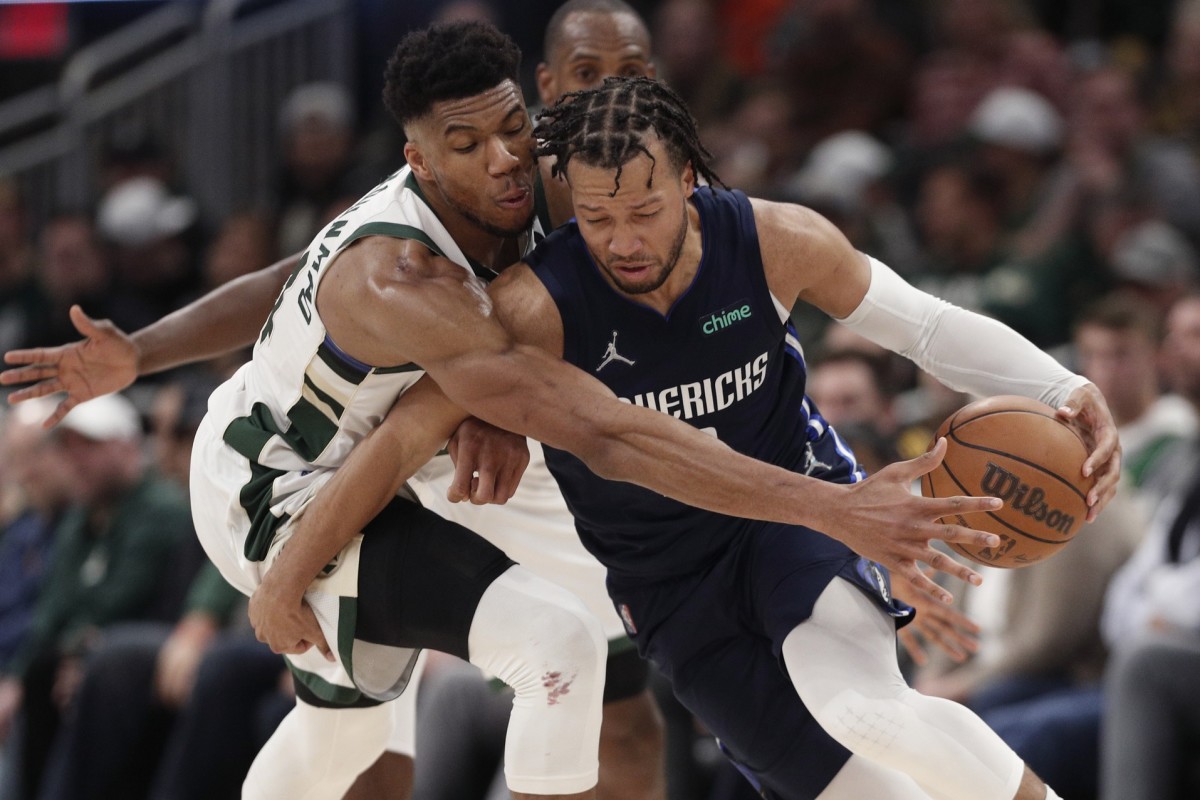
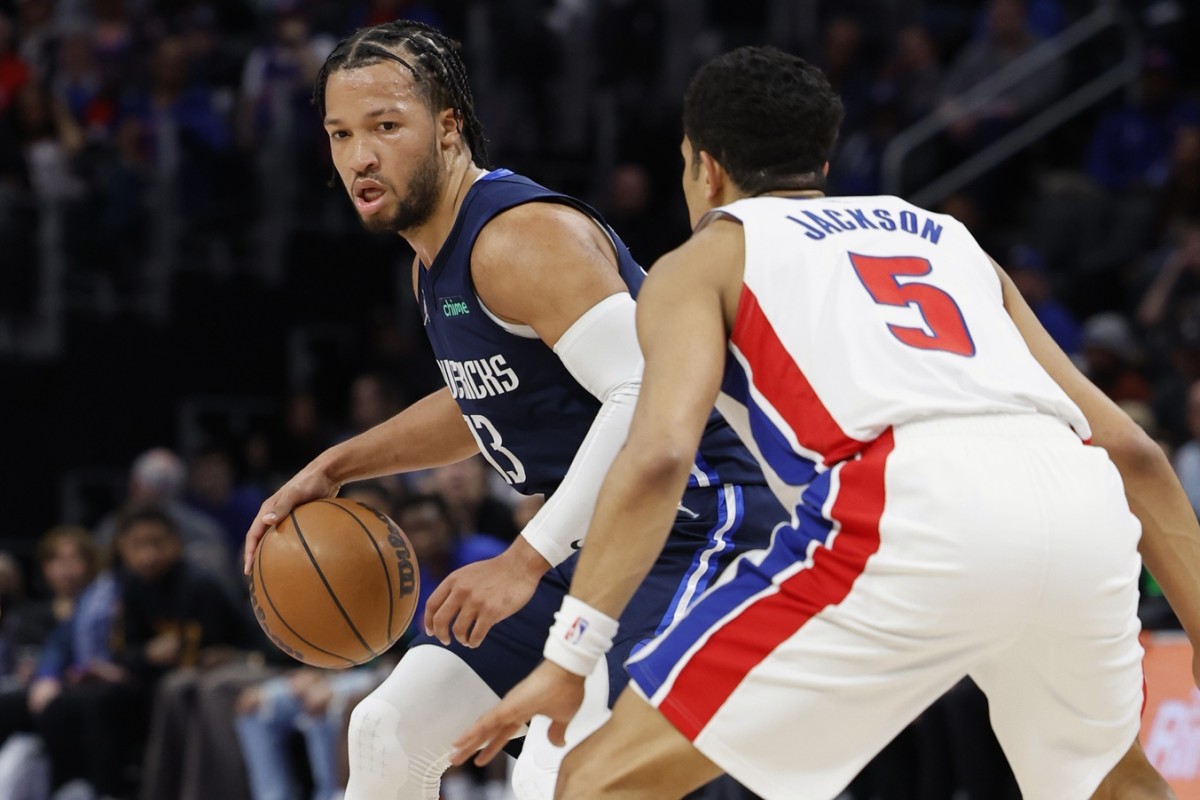
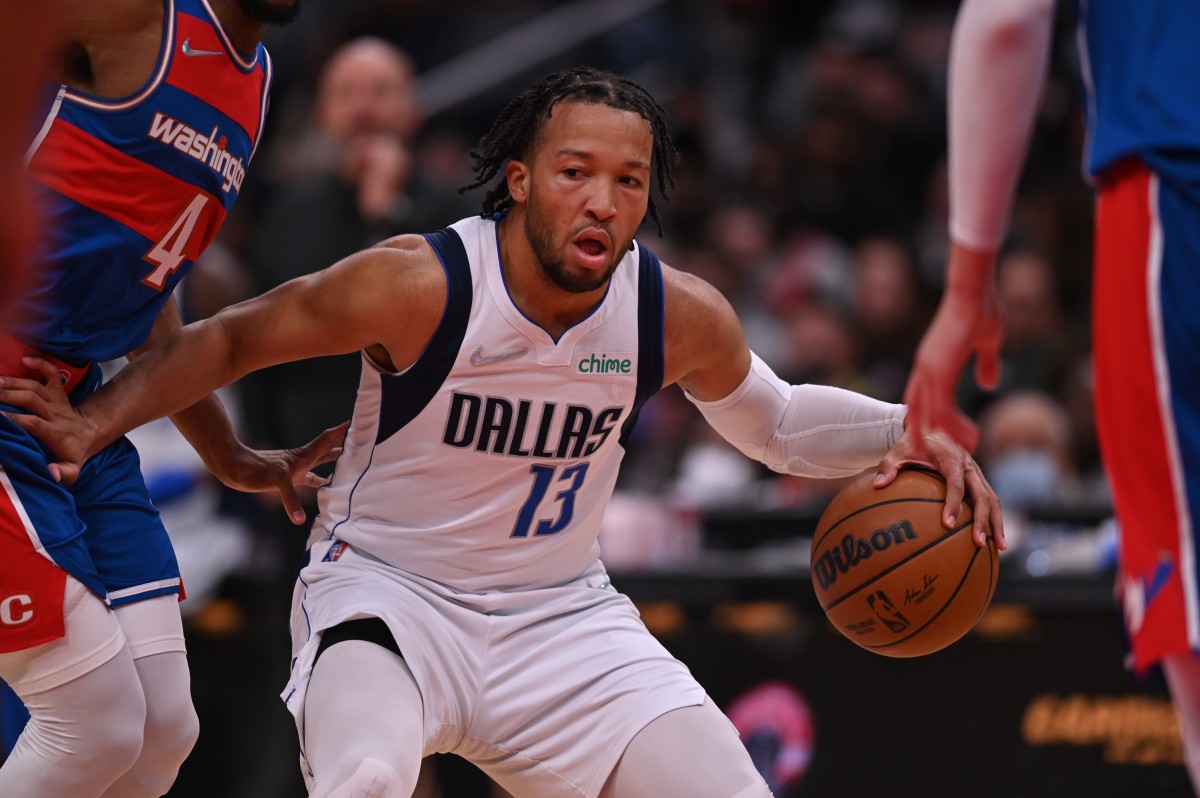
With the Jazz deploying a rim protector like Gobert, it's naturally more challenging for a small guard like Brunson to get to the rim. It doesn't help that Brunson hasn't been much for a pull-up shooting threat from beyond the arc in his career, either.
In his three matchups against the Jazz this season, Brunson attempted 58.8 percent of his field-goal attempts as pull-up jumpers. Of those attempts, 83.3 percent of them were from inside the 3-point line — showing a significant reliance on short/mid-range takes.
When Gobert engages a bit higher as opposed to staying in a deep drop, Brunson may have to use a hostage dribble to slow up the play. As the rim roller is working on getting behind the big defender, the on-ball defender will likely work to get back in front of Brunson — requiring him to make a challenging play.
The Mavericks can utilize multiple screeners to help ensure a gap when Brunson comes off the screen from the big. With the Jazz not being a defense that tends to show with the big, the on-ball defender will have to work hard to get through each of the two screens to impact the pull-up.
Throughout his NBA career, Brunson has not been much of a threat on pull-up 3s. He's converted at a low percentage and hasn't taken them often. Since the All-Star break, he's shooting 40.9 percent on these attempts but is taking just an average of 1.0 per game. Utilizing this more would open up options.
When Gobert engages closer to the level in a screening action that Brunson is involved in, he may not be able to get his mid-range jumper off comfortably. It could require him to draw a switch after attacking, then retreat out to engage in isolation. At that point, 3-point shot creation is critical.
With Brunson's sweet spot being around the elbow area, a longer on-ball defender and Gobert playing up can deter that initial pull-up in the gap. If Brunson isn't getting to the pull-up, he will need to be prepared to also draw Gobert on the switch. It's another opportunity to get to 3-point shot creation.
One option the Mavericks could do is bring the screener up higher to create a space for Brunson to get to a pull-up 3 after using the ball screen. With Gobert being needed to protect the paint, he can't engage so high that he can't also account for the rim roller getting behind him. The on-ball defender could later adjust by going under, but re-screening would become an option.
The Mavericks could also use a guard as a screener, so Gobert is not engaged as the big defender in the sequence. The Jazz tends to switch 1-through-4 against ball screens. If a non-shooting big is in the dunker's spot or the help one pass away is loading up, Brunson must be ready to break down his man and get to a 3.
There are a lot of situations where shot creation will be essential for Brunson against the Jazz. When those looks are dropping at a high clip, a lot of options open up. However, if they are not, more pressure will be on Dinwiddie to shoulder the load.
Brunson likes to reject ball screens and that may be a challenging approach to take against the Jazz. When doing so, he will need to be ready to stop on a dime and take a pull-up jumper. The degree of difficulty on these attempts is higher since there isn't typically as much of a comfortable rhythm involved.
There is the option of using ball screen rejections to attack the rim, especially when a ball screener involved in the play is a shooting threat. If Gobert doesn't fully commit to helping on the drive, there should be a window for Brunson to finish at the rim. However, a longer defender can make it a challenging play to make.
The Jazz will not be an easy matchup for Brunson, given he's a more undersized guard whose game isn't necessarily wired to make the defense pay with ball screen pull-ups. If he rises to the occasion, it will go a long way in establishing his long-term value as a player, but most importantly, giving the Mavericks a chance.
Continue to Deploy Dinwiddie in Horns Set
While there hasn't been an extensive amount of time at the Mavericks' disposal to expand the playbook for Dinwiddie, they've shown some intriguing creativity at times. Among the wrinkles has been the use of Dinwiddie as one of the "bigs" in a Horns set.
After receiving the ball with his back to the defender, Dinwiddie receives a ball screen from the other big. With the Jazz not being a defensive team that tends to have their bigs play at the level or show, this can allow Dinwiddie to get to a shot creation sequence from 3.
If Dinwiddie opts to turn the corner after coming off the ball screen, he will typically see a gap to operate. A rim protector will be in the paint, waiting to disrupt a deep drive finish. Being ready to use a change of pace to create a short-range jumper becomes the top option in such a situation.
When a guard like Brunson is being tightly pressured off the ball, Dinwiddie can pitch the ball to him in a "Blind Pig" sequence. If Brunson's man goes under, he can explode to the rim to make a play around the basket.
If the Jazz choose to switch the "Blind Pig" exchange as they did when Kristaps Porzingis was involved in a Horns set, Brunson will need to be ready to get to a mid-range jumper. Another option is to retreat, dribble out and get into isolation against a more favorable matchup.
It could become challenging to deploy this strategy with Powell at the five if the Jazz begin to commit to having Gobert help instead of staying home entirely. Kleber's shooting reputation may be vital to keeping the team defense in check.
Push the Pace Often
With Doncic, playing at a slower pace and forcing the defense to win the chess match creates an advantage for the Mavericks. That will not be the case without his supercomputer play recognition and electric all-around skill-set.
The Mavericks need to push the pace early and often to reduce the number of possessions they have to face Gobert's paint protection within the half-court.
The best option at the Mavericks' disposal for their non-Doncic starting backcourt to attack in transition is Dinwiddie. A finish attempt where Gobert's momentum is going backward is a lot more favorable than one where he's already in a position to make an impact. Additionally, playing fast can create chances to attack the smaller Conley when he picks up the ball.
There will be opportunities for role players to get up catch-and-shoot looks by pushing the tempo. With how effective Reggie Bullock, Dorian Finney-Smith, and Davis Bertans have been on the open floor, Dallas could take advantage. Whether by filling the wing or being ready to shoot as a trailer, the Mavericks' shooters have options.
Gobert is typically going to prioritize first getting to the paint to be in a position to protect the rim if there's a transition drive. The Jazz cannot afford to go away from lineups that feature Gobert, so capitalizing on these opportunities is important to create a needed advantage offensively.
Can the Mavericks Pull Off a Game 1 Win?
One of the key distinctions between the Mavericks without Doncic and the Jazz is that Utah has Donovan Mitchell to command heavy attention from the defense. The rest of the Jazz unit benefits by getting the ball moving and having a recovering defense to attack along with having a tough shot maker.
With the Jazz being one of the most efficient offensive teams in the NBA, a lot will likely be needed from Brunson and Dinwiddie to keep pace. Let’s see how they respond to Doncic being out in Game 1.
